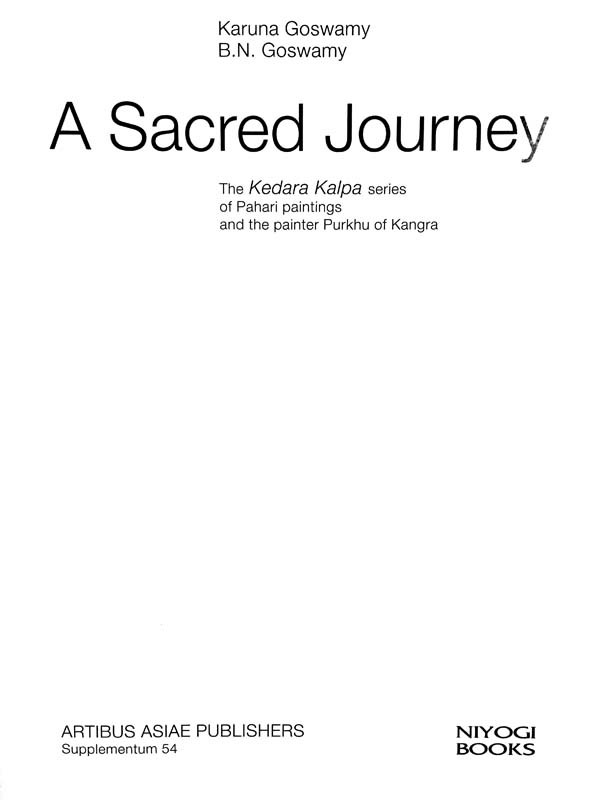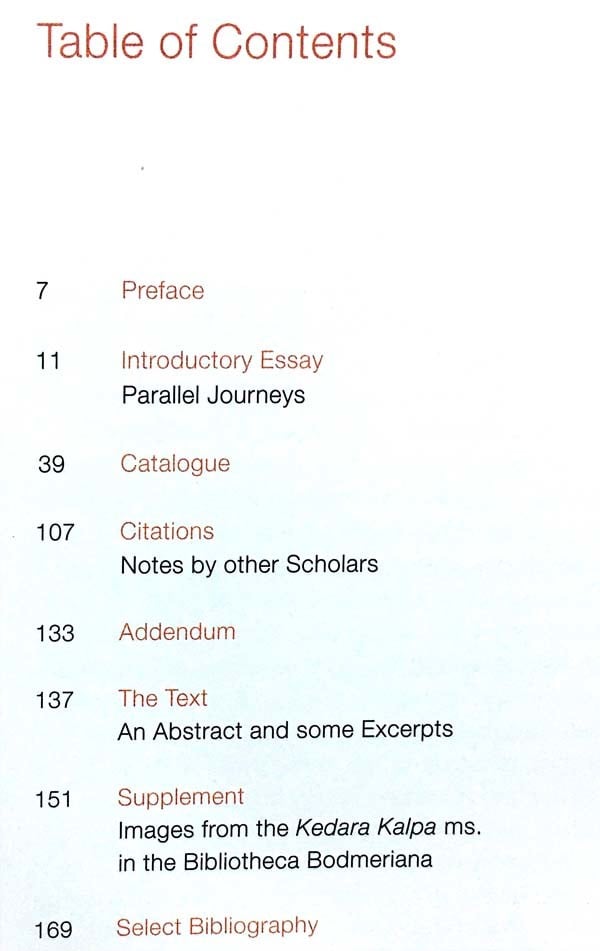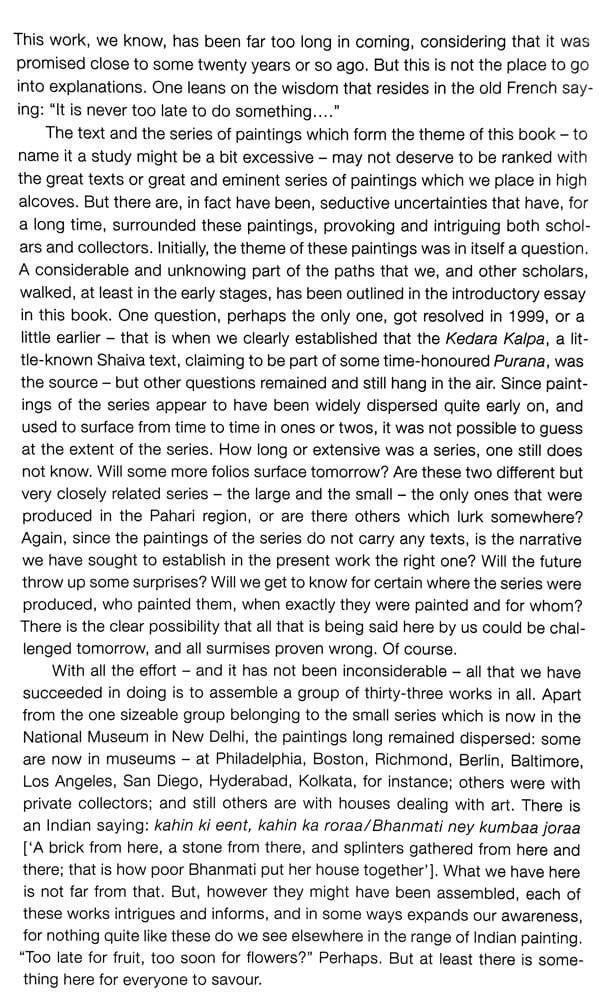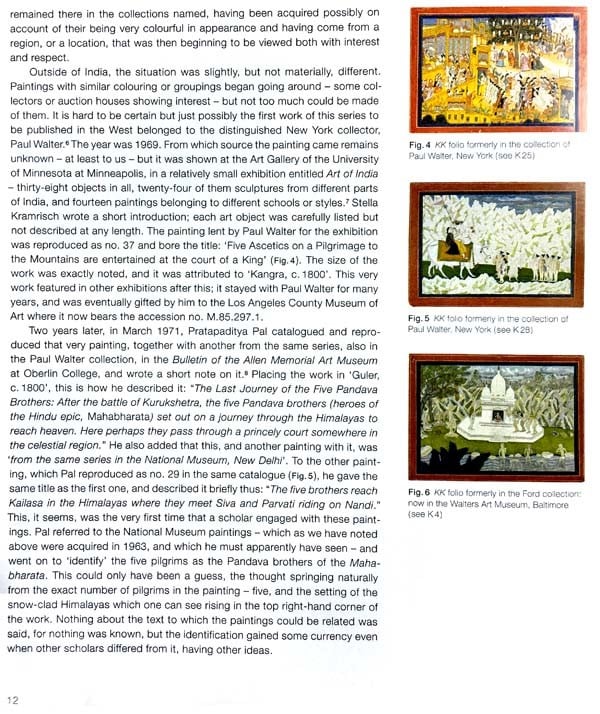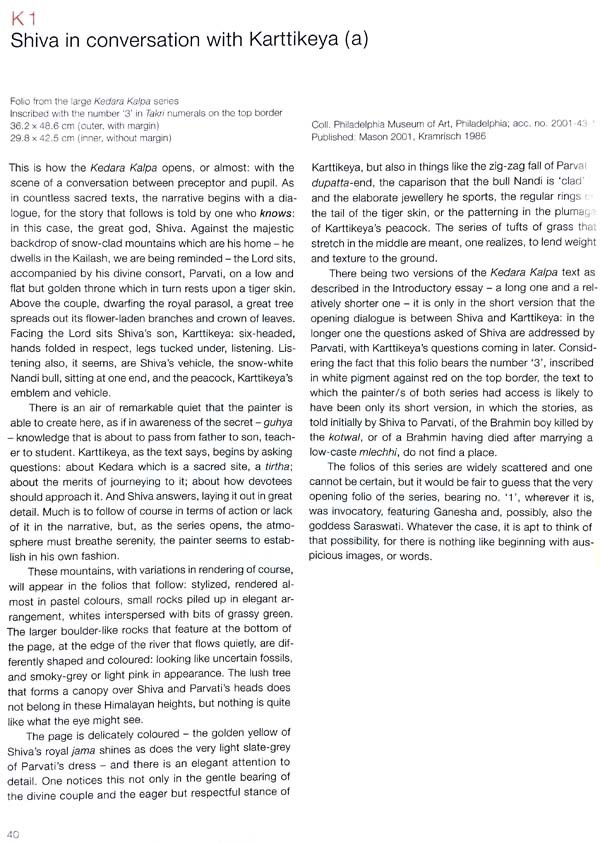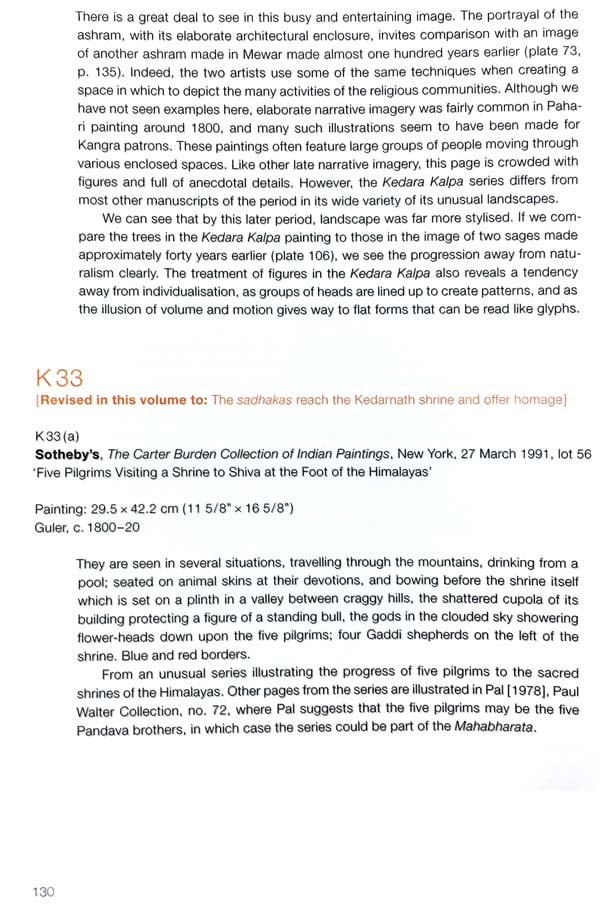
A Sacred Journey- The Kedar Kalpa Series of Pahari Paintings and the Painter Purkhu of Kangra
Book Specification
| Item Code: | AZE295 |
| Author: | Karuna Goswamy and B.N. Goswamy |
| Publisher: | Niyogi Books |
| Language: | ENGLISH |
| Edition: | 2021 |
| ISBN: | 9789391125356 |
| Pages: | 170 (Throughout Color Illustrations) |
| Cover: | HARDCOVER |
| Other Details | 12.00x9.50 inches |
| Weight | 1.07 kg |
Book Description
It is for each reader to decide, the authors appear to say.
Professor Goswamy also co-authored the seminal book Wondrous Images: Krishna seen as Shrinath-ji: Pichhwais of the Vallabha Sampra daya (Sarabhai Foundation, Ahmedabad, 2014). The present volume on the Kedara Kalpa series of paintings is based on her research and her identification, for the first time, of the ancient text on which the paintings are based.
B.N. Goswamy, distinguished art historian, is Pro fessor Emeritus of Art History at the Panjab Uni versity, Chandigarh. His work covers a wide range and is regarded, especially in the area of Indian painting, as having influenced much thinking. He has been the recipient of many honours, including the Jawaharlal Nehru Fellowship, the Rietberg Award, the Padma Shri (1998 and the Padma. Bhushan (2008) from the President of India. Pro fessor Goswamy has taught, as Visiting Professor, at several universities across the world, among them the Universities of Pennsylvania, Heidelberg. California (at Berkeley and Los Angeles). Texas (at Austin), Zurich, and the ETH (Federal Univer sity) at Zurich.
Professor Goswamy has written extensively. Among the best known of his many publications are Paharl Painting: The Family as the Basis of Style (Marg, Bombay, 1968); Essence of Indian Art (San Francisco, 1986); Pahari Masters: Court Painters of Northern India (with E. Fischer; Zurich, 1992); Nainsukh of Guler: A great Indian Painter from a small Hill State (Zurich, 1997); Piety and Splendour: Sikh Heritage in Art (New Delhi, 2000); Domains of Wonder: Selected Masterworks of Indian Painting from the Edwin Binney Collection (with Caron Smith; San Diego, 2005). Professor Goswamy's most recent works include The Spirit of Indian Painting: Close Encounters with 101 Great Works, published by Penguin/Allen Lane, 2014; Manaku of Guler: Another great Painter from a small Hill State (Zurich and Delhi, 2017). and The Great Mysore Bhagavata (San Diego and Delhi, 2019).
The text and the series of paintings which form the theme of this 3k - 10 name it a study might be a bit excusive - may not deserve to be ranked with the great texts or great and eminent series of paintings which we place in high alcoves. But there are, in fact have been, seductive uncertainties that have, for a long time, surrounded these paintings, provoking and intriguing both scholars and collectors. Initially, the theme of these paintings was in itself a question. A considerable and unknowing part of the paths that we, and other scholars, walked, at least in the early stages, has been outlined in the introductory essay in this book. One question, perhaps the only one, got resolved in 1999, or a little earlier that is when we clearly established that the Kedara Kalpa, a lit to-known Shaiva text, claiming to be part of some time-honoured Purana, was the source-but other questions remained and still hang in the air. Since paint mgs of the series appear to have been widely dispersed quite early on, and used to surface from time to time in ones or twos, it was not possible to guess of the extent of the series. How long or extensive was a series, one still does hot know. Will some more folios surface tomorrow? Are these two different but very closely related series the large and the small - the only ones that were produced in the Pahari region, or are there others which lurk somewhere? Again, since the paintings of the series do not carry any texts, is the narrative we have sought to establish in the present work the right one? Will the future throw up some surprises? Will we get to know for certain where the series were produced, who painted them, when exactly they were painted and for whom? There is the clear possibility that all that is being said here by us could be chal lenged tomorrow, and all surmises proven wrong. Of course.
**Contents and Sample Pages**
